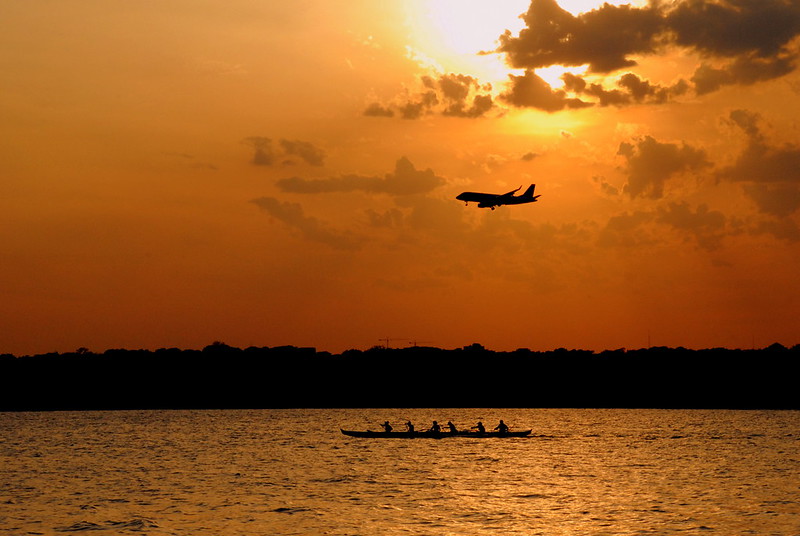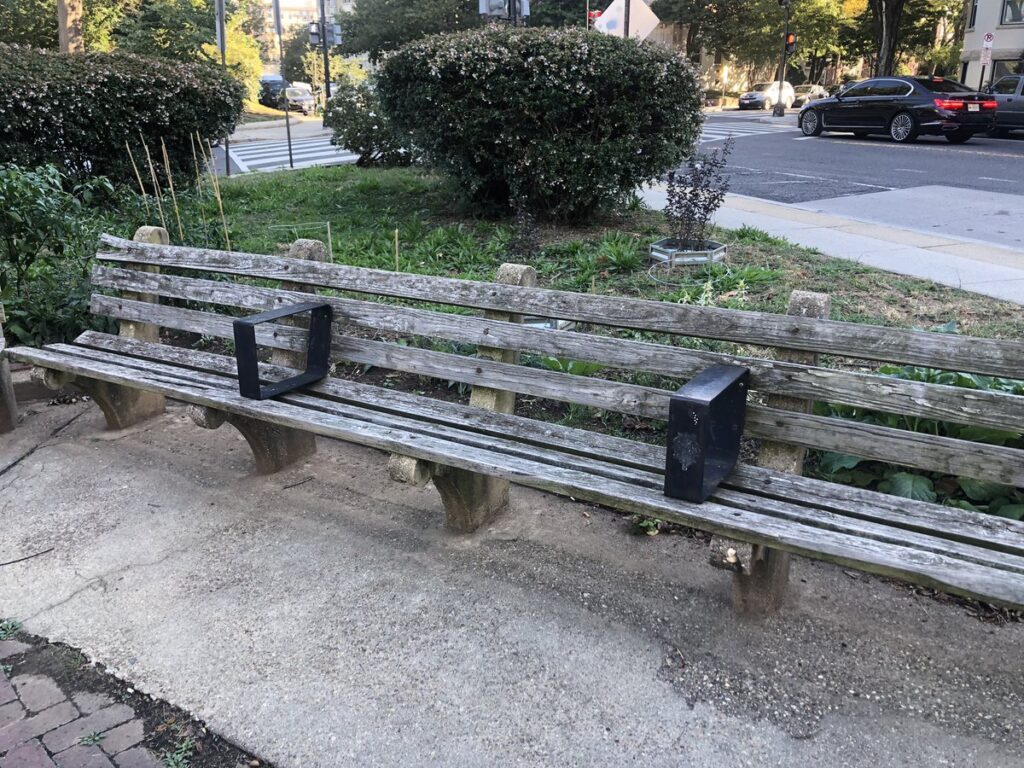Resources for surviving the heat will be harder to come by this summer for the District’s homeless population.
The D.C. government will again open cooling centers offering access to air-conditioned spaces but, due to budget cuts, will no longer provide water during heat emergencies.
“I think that’s troubling because water is very important in dealing with people who are outside in the heat,” said Mary Ann Luby, outreach worker for the Washington Legal Clinic for the Homeless. “You couldn’t have tap water and use a filter? I often think there are things that are considered problems that have easy solutions.”
The D.C. Homeland Security and Emergency Management Agency (HSEMA) has made the threshold for issuing alerts slightly more rigid this year. HSEMA will declare emergencies when the ambient temperature hits or exceeds 95 degrees (or when the National Weather Service forecasts such heat). HSEMA last year used the heat index, which factors in humidity and often surpasses ambient temperatures. The trigger when the District first began its heat emergency program had been an ambient temperature of 100 degrees.
“Ninety-five [degrees] is not terrific; that’s really hot!” said Luby. “It’s better than 100, but probably should be 85 according to what I think.”
Easing life for homeless people in the District during high temperatures deserves a greater degree of urgency, according to Paul Amara, program director at the 801 East Homelessness Assistance Shelter.
“In the winter, the capacity at shelters increases and we have extra food,” he said. “The same sense of seriousness is not seen with hyperthermia (severe heat stroke) as it is with hypothermia and, for me, it’s equally dangerous.”
The natural tendency is for people to consider the cold more dangerous than the heat contributes to the awareness gap, said Hilary Espinosa, First Helping outreach manager for D.C. Central Kitchen.
“The warmth doesn’t hurt as badly as the cold does so you forget to think about it as an issue, and also I think there’s such a highlight in the winter because it coincides with the holiday caring season,” she said. “There should be a shift in consciousness because homelessness exists 365 days a year and people can do a kind gesture for a stranger in July.”
HSEMA coordinates the heat emergency response plan but other agencies are charged with its implementation.
“We needed to put something in place because experience taught us people are vulnerable to severe heat,” said Jo’Ellen Countee, public information officer for HSEMA.
The plan extends hours at eight homeless shelters — four for men and four for women — and opens street showers, public pools and cooling centers.
According to homeless outreach workers, however, broken or overworked air conditioners hinder the effectiveness of shelters. Lack of communication about the opening and closing of centers, poor proximity to homeless hangouts and hostile security guards can further discourage homeless residents from utilizing the cooling centers, or even where water is available.
“After about 15 minutes in the air conditioning, a security guard asks you to leave — I just described a cooling center,” said Nechama Masliansky, senior advocacy advisor for So Others Might Eat.
Countee disagreed.
“That has not been my experience,” she said. “There’s no published time limit and people can be there as long as needed.”
The Office of Property Management is charged with operating the emergency cooling centers — from noon to 6 p.m., Monday through Friday, during extreme heat — in the lobbies of the following buildings: One Judiciary Square, 441 4th Street, NW; Frank D. Reeves Center, 2000 14th Street, NW; King Office Building, 3720 Martin Luther King, Jr. Avenue, SE; and 920 Rhode Island Avenue, NE. The United Planning Organization canvasses various areas in vans and shuttles residents to cooling centers. The heat emergency hotline is 1-800-535-7252.
The 1995 Chicago heat wave, which contributed to more than 600 fatalities in a week, prompted the D.C. government and many other municipalities nationwide to develop heat emergency response plans. Determining death tolls from hyperthermia, or severe heat stroke, in D.C., however, has proven difficult for homeless advocates.
The D.C. Office of the Chief Medical Examiner recorded zero hyperthermia deaths in 2007 and has yet to confirm figures for 2008. Two District residents who died during an August 2006 heat wave may have been homeless, according to a Washington Post report.
National figures are similarly fuzzy. The American Journal of Public Health in 2004 reported heat waves since 1998 had caused 400 weather-related fatalities, more than any other natural disaster. A study by the Centers for Disease Control and Prevention, meanwhile, revealed 688 people died yearly on average from 1999 to 2003. According to the Federal Emergency Management Agency website, on the other hand, 175 people die each year from exposure to extreme heat.
“Medical research shows that more people die during the heat than during the cold,” Luby said. “Yet we never have any deaths reported from the heat.”
If not the cause of death, heat is known to exacerbate pre-existing conditions that can lead to loss of life.
“There are people who die in the shelters but it’s hard to know if they died from the heat or other underlying issues,” Masliansky said. “Part of the problem is a backlog at the Chief Medical Examiner to reveal the cause of death. It would help to at least have a date so that we could go back and check the weather conditions for that day.”
The adverse impact of severe heat is greater on the young and old as well as on people who have liver and heart problems, take mental health medications or abuse alcohol. Not only do homeless residents possess many of these traits, outreach workers said, but they also face heightened risk due to increased exposure to the elements.
Street Sense vendor Jake Ashford, homeless since 2002 before moving into an apartment in February, knows the dangers of mixing alcohol and high temperatures.
“I had two buddies — Otis and Bill — who died from drinking when it was hot as hell out,” he said. “That happened up at 21st and New Hampshire [NW].”
The key to surviving the summertime, according to Ashford, 50, is to find a way off of the streets.
“I worked at a temp service during the day,” he said. “During the day, sitting around outside not doing anything was bad.”
Ultimately, Ashford said, homeless residents must do as much as they can to keep themselves safe.
“People have to take care of themselves because you can see what a hard time the government is having,” Ashford said. “I would say stay away from crowds, too. The air condition won’t keep 1,000 people cool.”
Concerned citizens, meanwhile, should still contribute, outreach workers said.
Espinosa pinpointed water, food, deodorant, T-shirts and socks as items particularly in demand during the summer.
“Think about the things you need in the heat,” she said. “The chances are a shelter or someone on the street could use those things too.”
For more information on the cooling centers and emergency homeless facilities, visit: http://dcema.dc.gov or call 1-800-535-7252.








